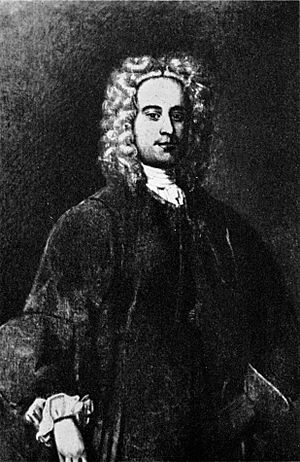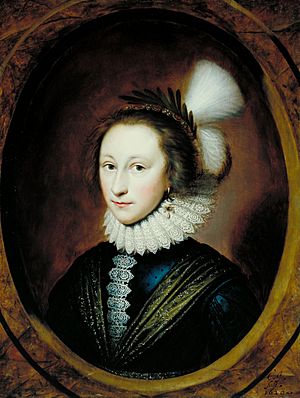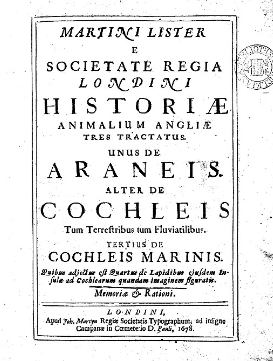Martin Lister facts for kids
Quick facts for kids
Martin Lister
|
|
|---|---|
 |
|
| Born | 12 April 1639 Radcliffe, Buckinghamshire
|
| Died | 2 February 1712 (aged 72) Epsom, Surrey
|
| Resting place | Clapham Church |
| Citizenship | British |
| Alma mater | St John's, Cambridge |
| Scientific career | |
| Fields | Physician and naturalist |
Martin Lister FRS (born April 12, 1639 – died February 2, 1712) was an English naturalist and doctor. He studied nature and practiced medicine. His daughters, Anne and Susanna, helped him by illustrating and engraving his scientific books.
About Martin Lister's Life
Martin Lister was born in Radcliffe, near Buckingham. His father was Sir Martin Lister, a member of Parliament. His mother was Susanna Temple. Martin Lister was connected to several important people. For example, his uncle, Matthew Lister, was a doctor to King James I and King Charles I.
Martin Lister went to St John's College, Cambridge in 1658. He finished his studies there in 1659. In 1660, he became a fellow, which means he was a senior member of the college.
In 1668, he traveled to France to study medicine. He then moved to York in 1670 to work as a doctor. He became a Fellow of the Royal Society in 1671. This is a famous group for scientists. He worked in York until 1683, when he moved to London. In 1684, he earned his M.D. degree from Oxford University.
Lister was a doctor for Queen Anne from 1709 until he died. He passed away in Epsom at 72 years old. He was buried at Clapham Church. He gave his books and copper printing plates to Oxford University. He wrote many letters to family, friends, and other scientists. More than 2,000 of his letters are still kept today.
Martin Lister's Scientific Work
Lister wrote many articles about nature, medicine, and old things for a science magazine called Philosophical Transactions. He was the first person to study spiders in a detailed way. He also studied shells, becoming known as the "father of conchology" (the study of shells).
Lister was the first to describe how some spiders "balloon." This is when they use silk to float through the air. He also invented the histogram, which is a type of graph used to show data. He gave the first important natural history collections to the Ashmolean Museum in Oxford.
His main books about shells were Historiae animalium Angliae tres tractatus (1678) and Historiae Conchyliorum (1685-1692). He also wrote Conchyliorum Bivalvium (1696). He was highly respected for his work on shells. He noticed that fossil shells looked like living ones. However, he thought they were just natural rock formations, not actual remains of ancient animals.
Lister's daughters, Anne and Susanna Lister, helped him a lot. They were both recognized for illustrating and engraving the pictures in his books.
In 1683, he suggested a new way to make maps of countries. He wanted to include information about the types of soil and rocks found in different areas. This idea made him the first person to think about creating a geological survey. A geological survey maps the different rocks and soils of a region.
Charles Lyell, a famous geologist, wrote about Lister. He said that Lister was the first to understand that layers of rock spread out over large areas. He also noted that Lister suggested making geological maps.
Lister gave many gifts to the Ashmolean Museum in Oxford. A ridge on the Moon, called Dorsa Lister, is named after him.
Lister's Collections
Before he died in 1712, Martin Lister gave over a thousand books and handwritten papers to the Ashmolean Museum. Most of these were about medicine and science. Later, in 1769, another person named John Fothergill gave the museum more of Lister's letters and notebooks.
In 1858, the museum decided to move its written items to the Bodleian Library. In 1860, the library received more than 3,700 books. Lister's books and papers make up almost a third of this first collection. He is the second-biggest donor after Elias Ashmole. His collection has about 1,260 books from the 1500s to the 1700s. They cover topics like medicine, anatomy, natural philosophy, and plants, as well as travel stories.
See also
 In Spanish: Martin Lister para niños
In Spanish: Martin Lister para niños
- Susanna Lister, Anne Lister
- Historia animalium by Conrad Gessner



